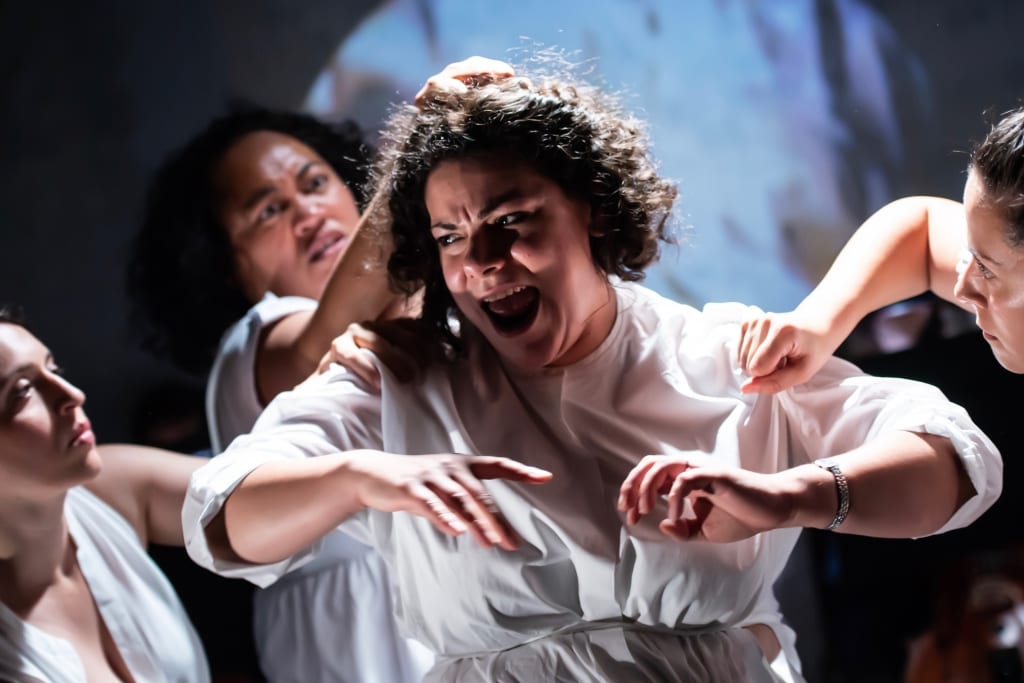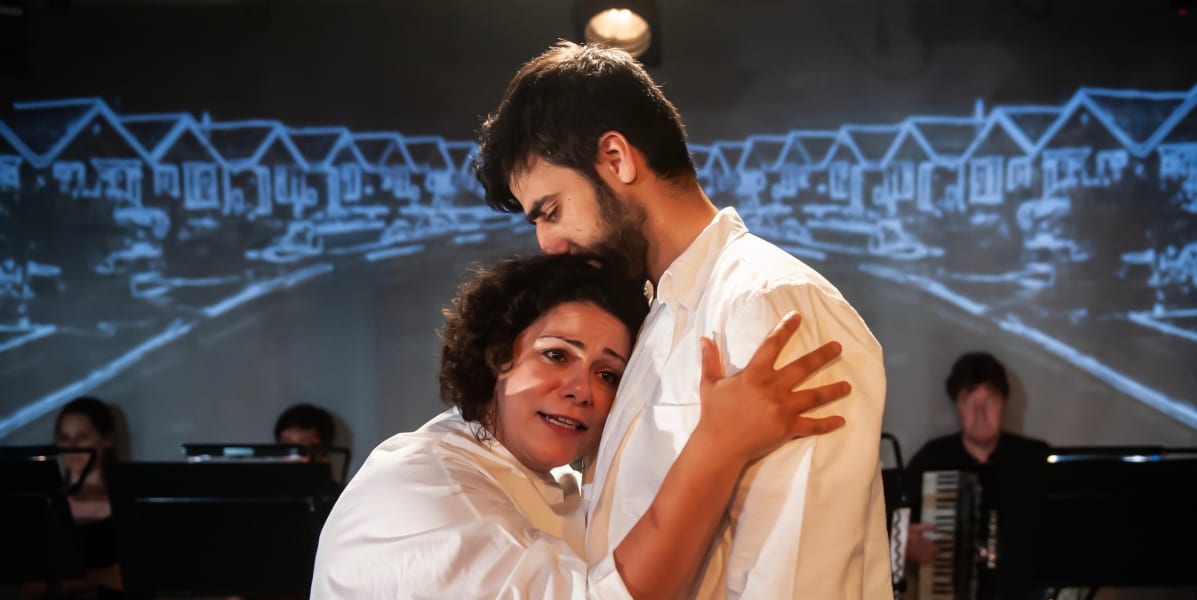This strange trilogy is made up of two short pieces – The Heart’s Ear and Bel Canto – and a longer piece, Silk Moth by Bushra El –Turk, which they ‘bookend’. Silk Moth is a short music drama that centres on the experience of a mother whose daughter is removed to undergo an experience that she dreads. Through the programme notes, and the words of Kelly Lovelady on the website of Ruthless Jabiru, the ensemble she has formed, we are told that they have a very strong mission to use their performances to promote ethical dialogue about humanitarian issues. Lovelady also strongly promotes the virtues of new music. Ruthless Jabiru is made up of a group of virtuoso Australian musicians living in London but these pieces display a very strong Arabic influence.
The Heart’s Ear composed by Liza Lim begins as we take our seats, skirting around a large pile of what at first look like shards of burnt charcoal. Then we notice that the pile is pulsing, rising and falling. As the woodwind and the strings take it in turn to introduce a hesitant set of musical phrases the pile begins to shift and a woman dressed in white gradually emerges as if from a grave. But when she is clear of the debris she begins to sweep it into patterns – whorls and trenches. It is a mesmerising process but while the music has moments of plangent beauty it offers little in terms of development to engage the ear as strongly as the images engage the eye. Behind the orchestra, a video screen shows images of plants opening and blossoming.

This piece merges seamlessly into Silk Moth as the mother played by the accomplished soprano, Camille Maalawy, takes centre stage. Around her, a group of four figures in white enact scenes that paint a picture of an undefined series of moments of crisis in the life of a woman who maybe her daughter. She is bound with a set of ropes, one made of bright light: she is veiled and she is led away. Behind these scenes, there is a video display at times telling the story of the silk moth and at other moments showing lines in English and (I assume) Arabic “I want a husband like a hole in the head”. It feels as though we are being asked to look at the older woman’s complicity in the fate of the younger but all is insubstantial and suggested. The music is similarly difficult to follow in conventional terms – “There is extraordinary beauty in orchestral colour and texture if we can lead our guests to really hear without feeling they need familiarity or tonality as a crutch” – in the words of Kelly Lovelady.
The final piece is Bel Canto by Cassandra Miller. The programme notes say that it was conceived as a “portrait of Maria Callas progressing from her young voice to the voice of her later years”. Here Camille Maalawy’s voice is joined by those of the three women who have been silent actors in Silk Moth and they repeat and echo a set of notes, first sung by Maalawy, that reminded me of the first phrase from visse d’arte, one of Callas’ most famous arias. As the music progresses the singers’ voices take on very different timbres.
The trilogy is a brave experiment in merging drama, video, mime, and song and it has moments of both shock and beauty. But the aural language is not as absorbing as the visual imagery and, as a coherent musical event, it left me perplexed.

